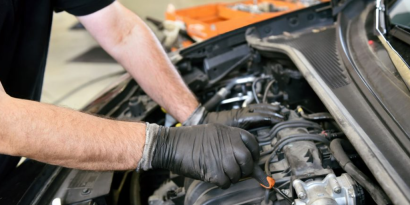You, the engine expert, certainly heard about the machining of cylinder heads, a very important process which is many of times a very necessary procedure in the maintenance of engines.
This is a complex service that in order to be successful requires a detailed and precise diagnosis. And, within this process it is possible that the machining of the cylinder heads is essential.
In today’s article, we’re going to talk a bit about the cylinder head machining process, and how it can help you in your day to day.
The cylinder head of the engine and its functions
The cylinder head is one of the most affected components during engine operation, and is a key component in order for your vehicle to get moving.
Damaged or worn cylinder heads cause complications like the mixture of water and oil as well as the loss of cylinder pressure, amongst other possible problems. Its importance is due to the fact that it is responsible for the controlling the entry and exit of fuel and air into the engine.
Is it clear now why its maintenance is so important?
And the preparation of the cylinder heads for the machining process is a solution, as well as prevention, for problems that can occur otherwise.
Understand the meaning of machining
To begin with, the main objective of machining is the correction of the effects of wear on the parts of an engine. That is, it helps to increase the longevity of these components, making their functionality the closest possible to the original.
And for the process to be done correctly and safely, complete disassembly of the engine is necessary so that every part can be inspected individually.
And this is why car owners, as well as maintenance professional, who take simple care of vehicles, like regularly changing the oil avoid breaking engine, ultimately postponing the need of machining.
Of course, this is not a rule and every case may be different story because, inevitably, wear will occur over the years. This is especially true if we consider components that are submitted to friction and high temperatures.
Because of this, the machining process is really recommended for vehicles with use greater than 200,000 kilometers. It is also necessary to resurface an engine in a machining process when the following inconveniences are noticed:
- Engine overheating;
- Excessive noise coming from the engine bay;
- Higher fuel consumption;
- Excessive amount of smoke leaving the exhaust.
So how is the machining of cylinder heads done?
The machining of the cylinder heads, in most cases, is done to remove slack and seating.
After the complete disassembly of the engine is complete, the cylinder head goes through a pressure test through which it is discovered if there are any cracks or openings on the part. If a flaw is verified, then welding must be done followed by a surface analysis.
When there is warpage, or when welding is needed, the surface of the cylinder head must be flattened. After which, the inlet and exhaust valves are machined or replaced. The same applies to the valve seats. The load of the springs must also be checked and an adjustment of the valves has to be carried out. This is followed by the verification of the hydraulic tappets.
Even spark plug threads must also be evaluated. Deformities as well as any type of wear are also corrected, and if necessary such items are to be replaced. After the machining is done the valves are adjusted with a special paste. Subsequently, they are seated back in the cylinder head.
However, close attention must be paid in this step in order for the seating to be perfect and in accordance with the manufacturer’s specifications.
Count with RIO to go even further.
So, did you know the information above about machining and cylinder heads? Know that there is a lot more from where that came from. In this blog, you can find a series of tips and exclusive analyses on a variety of components and parts that are fundamental to the day to day of the repair Expert!
Keep an eye open on our social media, and as always count with RIO to provide quality you with the best replacement parts in the automotive sector! Oh, and if you have any questions or want to know more about our solutions, leave a comment here on our blog, our team is ready to help you create movement!





